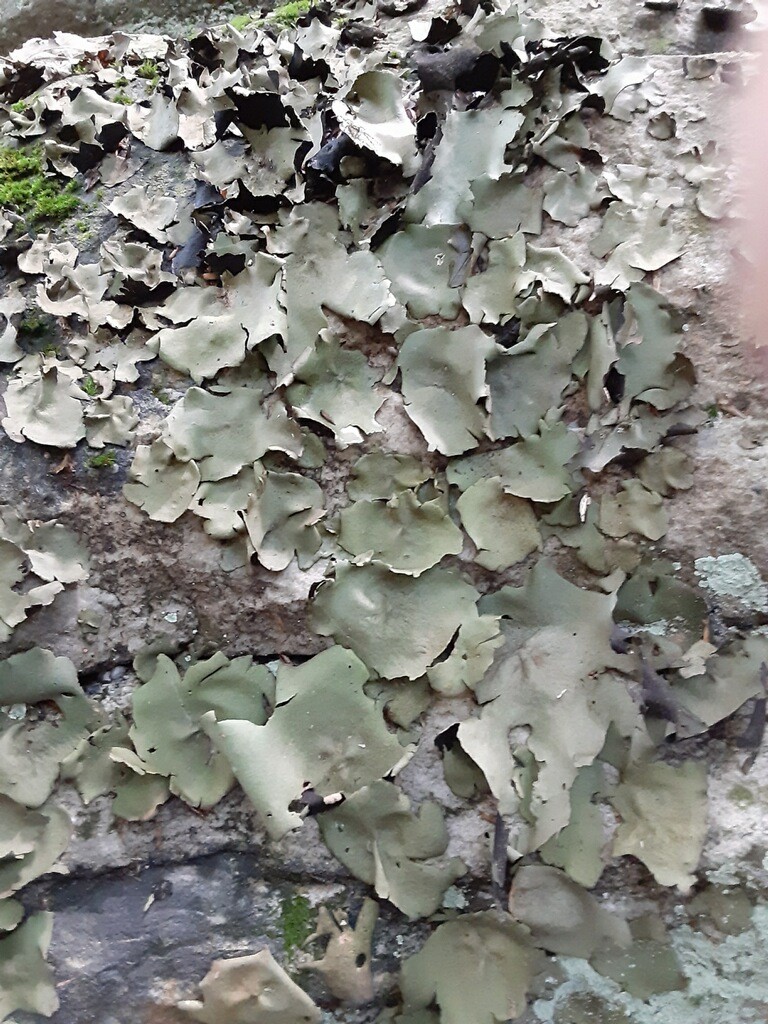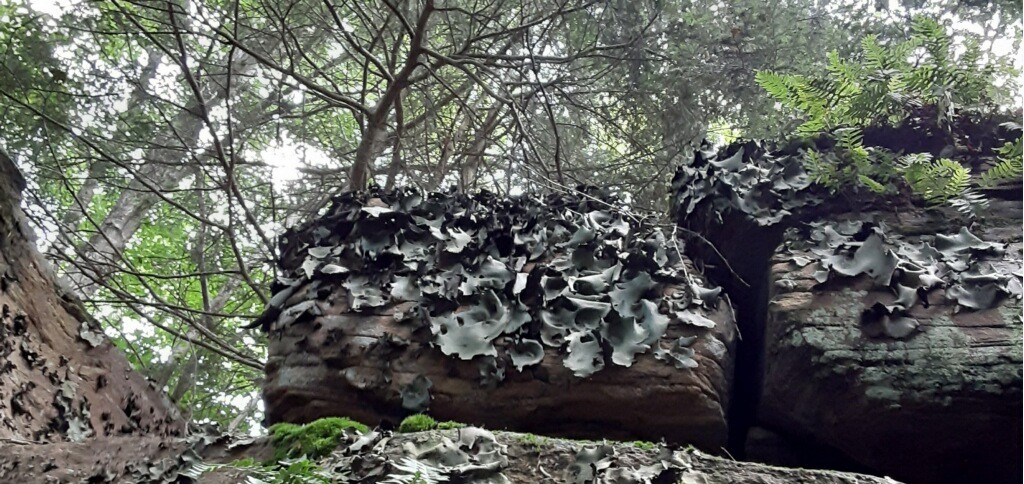By Susan Sprout
I like lichens- that’s what Smooth Rock Tripe (Umbilicaria mammulata) is – an amazing example of mutualism between a species of fungus and a species of algae or cyanobacteria.

This relationship creates fascinating possibilities for both organisms!
Fungus is the bulk of a vegetative body that provides shape, form and protection from total desiccation, while it receives nutrients in the form of sugars photosynthetically created by the algae or cyanobacteria layered inside. This is a win-win arrangement that allows them both to occupy extremely adverse environmental habitats, like Arctica, Antarctica, and deserts where they grow on many surfaces.
I found a lot of it growing on the rocks at Canyon Vista. Smooth Rock Tripe is one kind of leafy lichen that grows from a single attachment at its center, like a navel. It has a disc-shaped thin body called a thallus that is gray to reddish-brown to greenish when wet on top, but black and bumpy underneath. It may grow to the size of a dinner plate under optimal conditions, but it will take decades at a growth rate of 2 to 5 millimeters a year, less than a quarter of an inch!

Stories tell of soldiers at Valley Forge during the winter of 1777 – 1778 and various explorers, trappers, and adventurers having been saved from starvation by eating rock tripe, a practice probably handed down from Native Americans. Presoaking to remove bitterness and boiling for hours are said to soften its leather-like texture into softer, edible protein that contains one-third more calories than an equal amount of cornflakes. I’ll take the cornflakes. I like lichens a lot – and am hoping I won’t be required to eat any of them!

